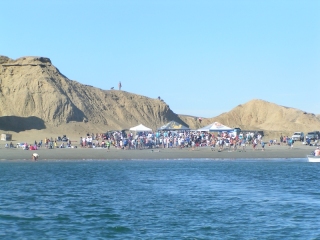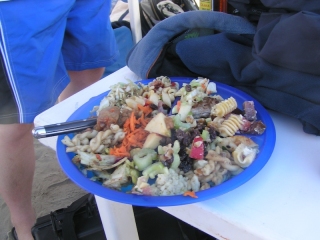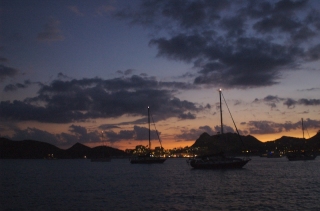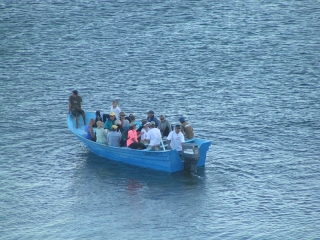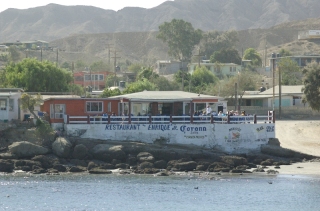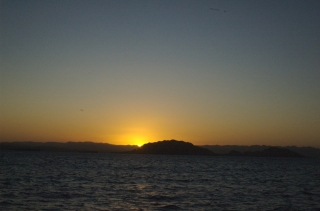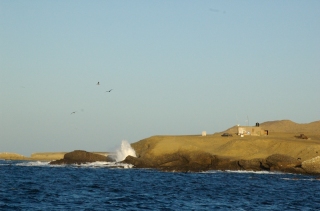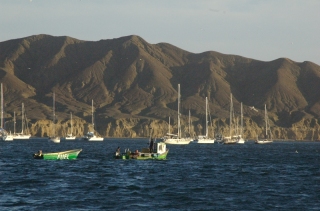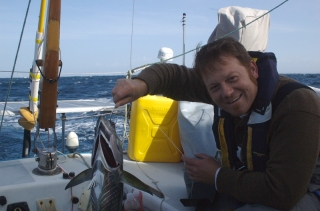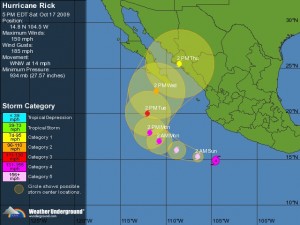The story line may be a bit confusing . . . because it sounds like I am still sailing around the world. But, currently, I am not. I am anchored in 17 feet of crystal blue water about 250 yards off the resorts in Cabo San Lucas. The tiki-torch-lit beaches, live music and swaying palm trees of the resorts add a nice bit of ambiance to my view, and hopefully, the somewhat cliche vision of a sailboat bobbing at anchor in the bay is adding just a little bit of ambiance for the resorts guests.
Each morning, as I arise, I start my daily writing, which has largely consisted of re-living the immediate memories from the recent sail down to Cabo San Lucas. As much as I had hoped to post these stories in real-time, it was simply not possible, but for a very good reason.
Sailing a boat consumes a tremendous amount of time and energy. As you become more proficient in the sailing and managing parts of a sailboat, it takes less time to do. This is not a luxury that I have had on this trip–because I am new to so much of this.
Typically, as I race or cruise around the bay or even off-shore for a day or two, the space of sailing occupies roughly, a day or a weekend. It has never really had a tangible impact in my life. I mean, we can all turn our cell phones off for a day and it is fine, right?
But, this trip has been different for a couple of reasons. There was the harrowing delivery from San Francisco to San Diego, and then the mad-scramble final boat preparations prior to leaving for Mexico, and roughly two weeks of the Baja Ha-ha sailing, and then 5 days of Mexican paperwork, Baja Ha-ha activites, sight-seeing, decompression (and warm showers), getting the crew members to the airport, and finally, getting the boat on the anchor (by myself). And, then there was this other little thing . . . .
Over the course of the last month, it has been necessary for me to go from dipping my toes in the waters of sailing to swimming proficiently–an enormous, and consuming task. I am certainly NOT saying that I am an expert sailor, but rather that what I am doing right now, today, requires me to know a lot more about sailing than I did two months ago. It is the same immediate and tangible requirement I had when I was hired to manage an Engine Rebuilding shop my first summer home from college.
I applied for the job, idealistically, thinking that I could do it easily with the proper guidance. I could change an alternator, a starter, and spark plugs. I knew all the parts of the motor. What more did I need to know? I guess I believed that there would be some exiting manager who would be there to answer my questions for a few weeks, and show me how it has always been done. I would memorize the in-place systems, and be fine with it.
What I did not recognize at the tender age of 18 was that I suddenly needed to have answers for both the other employees and customers. I needed to be able to explain why blue smoke is coming out of the tailpipe, or black smoke, or white smoke. Or, why a 3-angle valve grind is better for racing and a single angle grind is appropriate for every-day driving. Or, why one crack in the engine block warranted a new engine block and why another crack could be repaired.
To give credit to my boss at the engine shop, he taught me everything that I needed to know and in short order–about a month. But, it consumed me. I arrived early to work, left late, and worked through my lunch hours–because it took me longer to accomplish tasks of an experienced manager.
After leaving our shop, I went next door and asked nosey questions to the shop owners who removed and re-installed the motors into our clients’ cars (we were only the machine shop/engine builders). How can you tell that water pump needs to be replaced? How do you keep track of where all those vacuum tubes belong? Why does it matter that the rubber on the motor mounts has worn away?
And, when I got home after the 400 questions game, the owner sent me with a stack of required reading of various trade publicatons, manuals and diagrams. Much to the credit of both the owner’s “fast-track plan” and the guys who owned the shop next door, in the space of about a month, I went from knowing what a piston is to having opinions about piston ring brands . . . .
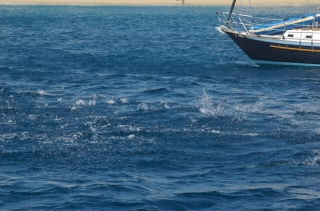
This sailing adventure has largely taken the same course. In the last month, or so, I have weather-sealed windows, filled holes, installed dodgers, installed solar panels, re-wired electrical things, diagnosed engine problems (overheating and simply stopped running), cleaned, sorted, practiced heavy-weather sailing, chosen anchorages, set anchors, removed kelp from the keel (or attempted to–it had already worked itself free), navigated by chart for hundreds of miles, sailed off-shore for days at a time, called on-shore friends for assistance, diagnosed and reconfigured auto-pilots, planned and provisioned boats, avoided collisions of any kind, negotiated foreign harbors at night, managed battery charging schedules, repaired dinghys, landed and launched dinghys in surf, communicated through VHF and Single-sideband radios, cooked, cleaned dishes, refilled diesel at sea (in the dark, and off-shore), sailed under spinnaker at night, and a whole list of other things either by myself or with my Captain and fellow sailors–some that I cannot remember, but will return suddenly if I were to need that information.
This process has consumed ALL of my time during the sail–the time that I expected to be updating the story. And, to give credit to my Captain and fellow sailors . . . thank you.
Future posts will continue to be me re-living my sailing memories before they become too remote and slip away entirely. Meanwhile, the background noise consists of Cabo San Lucas tourists on rented jet-skis using anchored sailboats as obstacle courses, clinking anchors or cruiseships stopping for the 5-hour guest excursions, glass-bottom panga boats ferrying visitors to and from their various destinations, and floating disco lounges puttering around the bay filled with hollaring dancers as lyrics, such “play that funky music, white boy,” thump along to multi-colored lights. And, a nice sunset or two . . . .
And, now, back to our regularly-schedule programming. 😉
